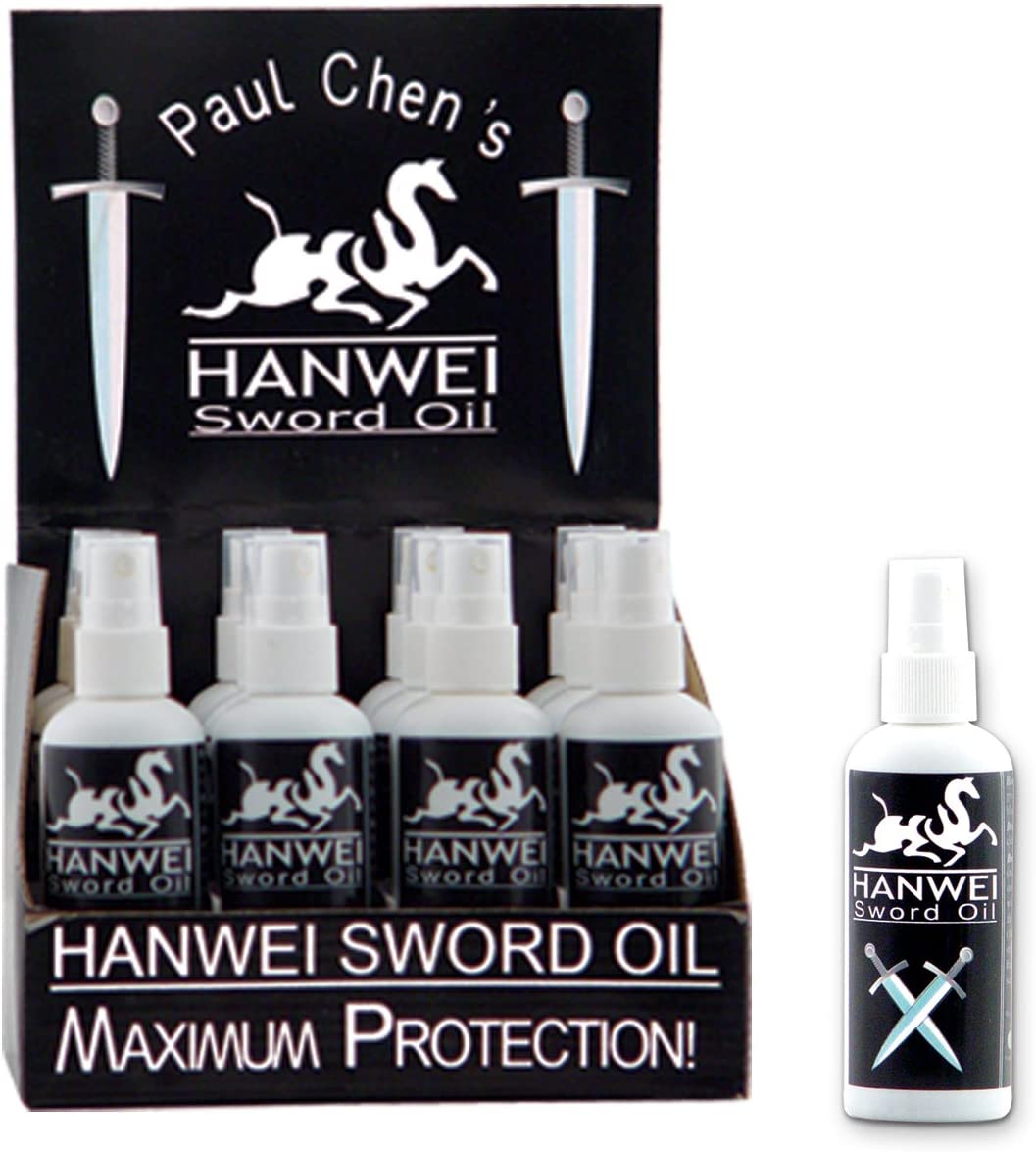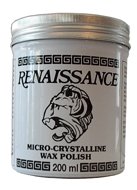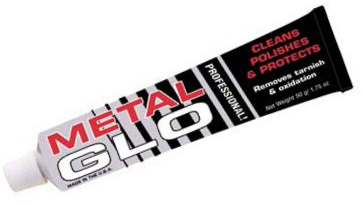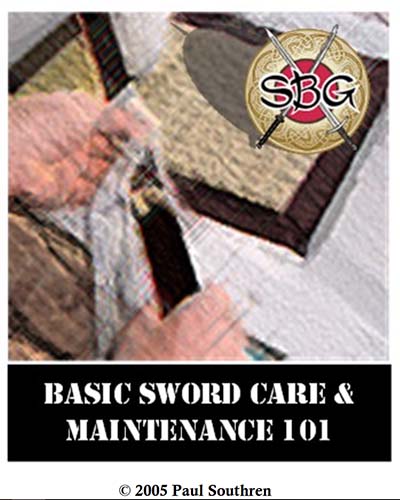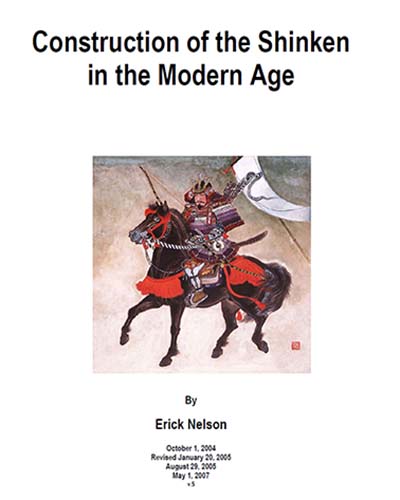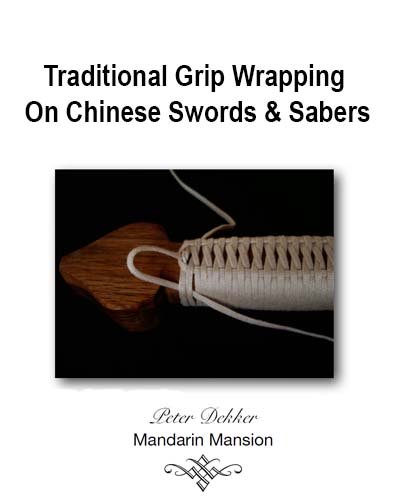Recent Articles
-
Christmas Sword Buying Guide 2025
Dec 03, 25 10:53 PM
Basic Sword Care and Maintenance 101
 Some like the "antiqued" look. But you probably don't want YOUR sword to end up like this..
Some like the "antiqued" look. But you probably don't want YOUR sword to end up like this..A lot of beginners can get overwhelmed by how to care for their new sword -indeed it can be a lot like navigating a maze of conflicting information.
For example, a lot of sword selling sites recommend using WD-40 to protect your sword from rust. Yet most experienced collectors would say this is a very bad choice..
...I can understand why so many beginners get confused!
The reality is that each person in time finds their own personal favorite sword care methods depending on the type of sword, how they use it, the climate they live in and a whole host of other factors.
But here's a few solid basics that can get you started to finding your own way...
First Cleaning
The only good point of stainless steel ornamental swords is that they don't generally rust, so all you need to clean them up is a bit of Windex and a cloth.
Functional swords however use carbon or spring steel, and as such, they are prone to rust. As such, sword manufacturers need to coat the blades with copious amounts of grease to prevent rust while the sword is warehoused and protect it during transit.
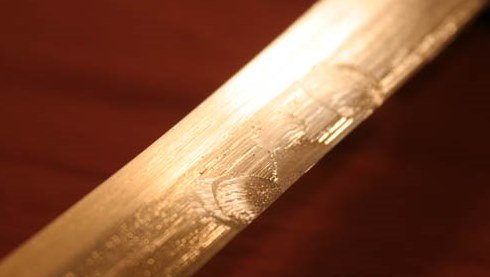 Most carbon steel swords arrive with a layer of protective grease
Most carbon steel swords arrive with a layer of protective greaseNaturally, the first thing you will want to do is clean this gunk off so you can take a good look at the blade. You can do this with a lint free white cloth and some rubbing alcohol.
Take your time and be careful not to cut yourself! (most sword related injuries occur during cleaning and maintenance, so turn OFF the TV and focus on what you are doing - one slip and you could be making an unexpected trip to the emergency department!).
Sometimes the grease ends up in the sheathe, but it will go away with time - or if you want to speed up the process, sticking a rifle cleaning rod in the sheathe can do wonders.
Oiling Your Sword
Beginners can often get rather flustered by contradictory recommendations for WHAT oil to use for rust prevention..
But the truth is, it actually doesn't matter - all that matters is that that the sword has a light, fine sheeny layer of oil on it at ALL TIMES.
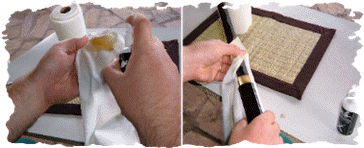
What you use really depends on your preference and what is readily available. Some popular choices include:
- Machine Oil (3 in 1, Rem Oil or Sewing Machine Oil)
- Light Mineral Oil (i.e. liquid paraffin)
- Choji Oil
- 'Sword Oil'
The last option, sword oil, is supposedly oil made specifically for swords by the sword manufacturers themselves such as Hanwei Sword Oil.
Personally, I don't think these products are necessary - Hanwei sword oil often doesn't spray properly (the nozzles get blocked) and Windlass Rustblocker doesn't always block rust - so the key is, just use whatever is readily available to you and, at least until you have a feel for it, check the sword regularly to make sure the oil isn't drying up and is doing it's job.
For Japanese swords, the traditional oil used is called 'Choji' oil - which is basically just light mineral oil with a dash of clove oil (5ml of clove oil per 1 liter of is the official 'recipe' for Choji oil). However, steel is steel, and Choji is not at all necessary for Japanese swords - see a list of substitutes for 'Choji Oil' here
For more detailed instructions on oiling and protecting the blade from rust, you can check out my quick and easy guide to creating your own sword cleaning kit here
How often you need to oil your sword depends on your climate. In most temperate climates once a month seems to be enough - but if where you live is very humid, you may need to oil your swords weekly.
Alternatives to Oil
Naturally enough if you live in a particularly humid climate or need to put your swords into storage for any length of time, you'll want to look at some other options..
One easy way to 're-grease' your blade is to coat it liberally with petroleum jelly (Vaseline), wrap it in some oily rags and keep it in a cool, dry place.
Another popular alternative is a product known as 'Renaissance Wax'.
The great thing about renaissance wax is that this stuff actually works (it was developed by the British Museum in the 1950s) and as a little goes a LOOONG way is also very affordable (you can pick it up HERE at Kult of Athena for as little as $16 a tin).
To use it, simply apply a very small amount to a lint free cloth and it dries hard, protecting against fingerprints and rust for years (unless you use the sword of course). To remove it, simply do the old rubbing alcohol trick and a cloth.
And the best part is, you can also use it on leather and other fittings (especially handy on pommels, etc) - HIGHLY RECOMMENDED.
Polishing out scratches
It's par for the course that if you use a sword for cutting exercises, its going to get a few minor scratches here and there.
There are several sword care methods for removing scratches depending on how deep they are and I cover the main method for deep scratches in my free ebook sword care and maintenance 101 (see below).
However, for every day low level abrasions, just about everyone swears by a polishing paste designed specifically for swords by United Cutlery called Metal Glo - this stuff is PERFECT for general purpose polishing and indeed, for swords there is no other product that comes close. Also highly recommended...
Common Repairs
In addition to general care and maintenance, there comes a time when even the best made sword will need some minor repairs. Here are a few common issues and tutorials on how to fix them:
How to fix a loose rattly tsuba on a Japanese sword
Fixing an overly tight or loose saya
How to straighten a twisted or bent blade
Miscellaneous Sword Care Tips
- Don't Leave your sword in a leather scabbard for long periods of time. Wooden scabbards are okay (as long as they are only lightly oiled, or the oil will cause the wooden scabbard to swell), but a leather scabbard will trap moisture and cause nasty rust spots on the blade.
- In general, avoid touching the blade with your fingers as the acid from your fingertips can etch into carbon steel over time.
- Wooden handles should be treated with a light coating of lemon or tung oil to help prevent cracking.
- Leather scabbards, sheaths and covered handles should be treated with a good leather paste wax. The scabbard can also be treated with neatsfoot or mink oil for waterproofing, although this is not recommended for the handle as it is slippery.
- Avoid contacting oil onto any leather parts of the sword as it will cause the leather to rot very quickly.
Free Sword Care and Customization eBooks
For more information on how to clean your swords, prevent and deal with rust problems, as well as a simple technique you can use to polish the blade and remove surface scratches, download my FREE 11 page PDF ebook:
Basic Sword Care and Maintenance 101
It's no fluff and filler, straight to the point information on how to
keep your swords in tip top condition. And best of all, it's 100% FREE!
What's YOUR sword care tip?
Do you have some tips on sharpening, cleaning, oiling or polishing a sword that isn't covered here? Share it!
Visitor Submitted Sword Care Tips
Click below to see contributions from other visitors to this page...
SCA fencing blade tips
Steel wool at fine grades is wonderful for getting rust off if any has accumulated due to humidity. I keep a box in my fencing bag at all times.
My …
Mineral oil twice a year is good.
Have used plain mineral oil on my carbon steel broadsword blades for 18 years with never a spot of rust. A bi-annual application is enough as long as the …
Silicone Impregnated Gun and Reel Cloth
I have used Silicone impregnated Gun and Reel cloths to coat my swords for years. Just wipe all metal surfaces after handling the blade and you're all …
Grit - Mesh - Micron Conversion Chart
Katana blade repair & polishing has been my steady occupation for the past couple of weeks. I understood what grits to use as far as water stones/whetstones/emery …
My Sword Maintenance Troubles
So back in '07, I bought my 1st real sword, a Kampilan; the infamous sword that Chief Lapu Lapu used to dispatch Spanish explorer Ferdinand Magellan. Unfortunately, …
Premium Gun Oil
I own a few sword one of them is a katana and a wakizashi the rest are carbon blades, I live in a relatively humidity climate and I have found the best …
Oils and polishing/ using a bench grinder
Hiya Paul @ SBG;
First, thank you for this site. It was due to your excellent information no B.S. style that helped me find the right sword. I bought …
FrogLube Paste!
A great substance for protecting almost any valued metal item is FrogLube paste, which is basically a gun-oil class grease which is food-grade and non-toxic. …
Corrosion management in a salty environment.
Hi All:
We live "on the Ocean" (i.e. live-aboard boat), and obviously corrosion is right up there as a major problem.
Tried many management options, …
Issues with Vegetable Oil
I bought my first katana and had read on quite a few sites that vegetable oil is a cheap, serviceable alternative to professional oils. It was working …
neverdull
I have fould that the metalcare product "Neverdull" works well as a minor blemish and light rust remover/ polishing agent. Comes in a blue tin as a fluid …
OLD meets NEW
I have one word to say concerning rust care for high carbon steel blades:
That word??
EEZOX ---GUN AND KNIFE CARE.
This is the best stuff I have …
Do Not Store Knives, Swords or Guns for the Long Term in Leather
The treatments for leather to make it suitable for use can contain many substances that are harmful to metal.
Often finished leather has a slight …
New Blades-What not to do!
I recently got a Wakizashi from an old houses attic with a considerable amount of rust, and I used a metal brush power tool to clean it off. DONT DO THIS!!!!! …
Wooden saya repair
I had once upon drawing my ryumon dragon katana hit the saya and chipped it, i found a good way to repair it, get some black nail varnish or whatever color …
Rust Blocker
I have several swords from Windlass, and have found their product "rustblocker" works very well. When it dries there is somewhat of a visible (waxy-ish?) …
Quick Wipe
Well I enjoy cutting things, as every sword lover does. From my experience, people wait until the end of their cutting session to wipe off the sword. …
g1rock
I recently purchased a Edge Pro Professional model, it can turn any knife or sword into a razor.
You can literally shave with anything you have sharpened …
Recoloring White ito Wrap on a Katana
I read awhile back some one asked for a good way to renew the whitness of a white wrapped kanata, so i asked around well it seems to be skinners white …
A Knight’s Journey: Obtaining the proper draw on your sword.
"Renaissance," French for "rebirth," perfectly describes the intellectual and economic changes that occurred in Europe from the fourteenth through …
Loose Fittings
I have a Masahiro Cherry Blossom. After a little while of use, I noticed the tsuba was becoming loose. It wasn't terrible loose, but it did rattle when …
Metal Glo
Hi!
I'm from Holland and got some Metal Glo all the way from the U.S. and I must say, it does wonders for your sword.
I've used it on my Katana, …
I just use whats around the house.....
I generally clean my weapons with windex, degreasers, or metalic polishes (aka shilly shine). Though the method is really great for around the house, i …
gun polish!!! and a nintendo ds cleaning cloth.
The title says it all...!
Polishing Out Scratches on Sword Blades
I found auto body sanding paper in 1500, then 1800, and finally 2000 grit will do an excellent job of sanding out scratches on my sword blades from katanas …
Don't use vegetable oil!
When I was a child, I was given an ornamental lodge sword (by default, as my dad left us). I knew that oiling a sword was important, so I used the only …
Polishing With Brasso
I have this katana which I use to learn sharpening and with all the scratches it is well it only cost $54.00.
After each sharpening session I have …
How to fix a siblings blunders
A few days ago I recieved my first fully functional Katanas, without listening to me my brother starts unpacking one of my Katanas, he then unsheths it …
Long Term Rust Prevention
I had a vintage 1854 US Navy saber that I wanted to display out of its scabbard, but didn't have any access to a protective wax to prevent rust. Looking …
Gun Cleaning products for Swords
There are several gun cleaning products available that are extremely good for cleaning the surface of a sword. Any general purpose firearm oil (aerosol …
wash wash wash
i own about ....hmmm five good handmade (true) battle ready swords and about three wall hangers or S.L.O. and i have noticed how much better the sword …
Trumpet oil and almond oil - works for me...
I'm a huge fan of Windlass swords; most of my sword collection is made up of MRL product. But my very first sword, which I received for my 13th birthday, …
cold bluing tips
A great way to improve the finish on steel and iron sword fittings is to use cold gun blue - this is actually a well known method but heres a few tips …
quick fix on cleaning scabbards/saya
Some katanas have a type of wax build up in the saya that gets on the blade. Simple fix use a gun cleaning kit (barrel rod and stiff nylon brush)and clean …
microfibre and lens cloths
HI There
For a number of years now - when I come to clean my katana blades i find that certain cloths leave a streak free sheen and lustre far better …
Tuff Cloth
I personally use 3 products to maintain my swords:
1) Nevr-Dull, an automotive cleaning product that removes rust. It comes in a metal tin and applied …
Japanese Swords - Tsuka and Tang
Just a heads up, I realise this is more appropriate for true nihonto than our sub $300 market but figured it was worth posting.
The part of the blade …
Further Resources
One of the best articles on the net about basic sword care is to be found at My Armory.com: Care and Maintenance of the Modern Replica
You can also find a myriad of different threads discussing the pros and cons of all the latest different sword care methods over here at the esteemed Sword Forum International
And finally, for the best information on the net on how to maintain traditional Japanese swords I recommend this article on Richard Stein's Japanese Sword Guide
I hope this information on basic sword care has been helpful. Click here to return to Sword-Buyers-Guide.com's homepage from Navigating Sword Care Maze.

Buying Swords Online Can Be DANGEROUS!
Find the Best Swords in the:
Popular & Recommended ARTICLES

The ONLY true free online magazine for sword enthusiasts. Delivered once a month on the 1st day of the month, no filler and no BS, just the latest sword news & info delivered straight to your inbox.

